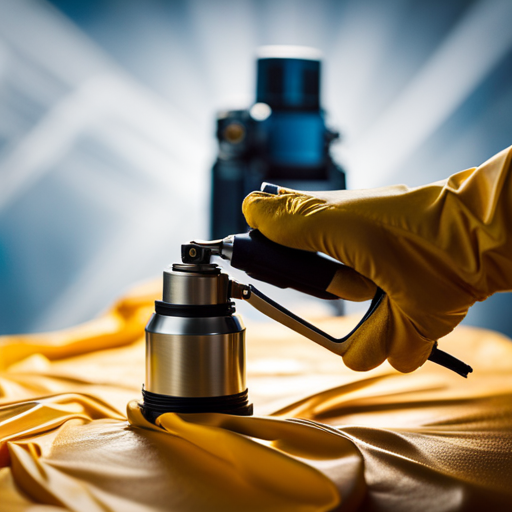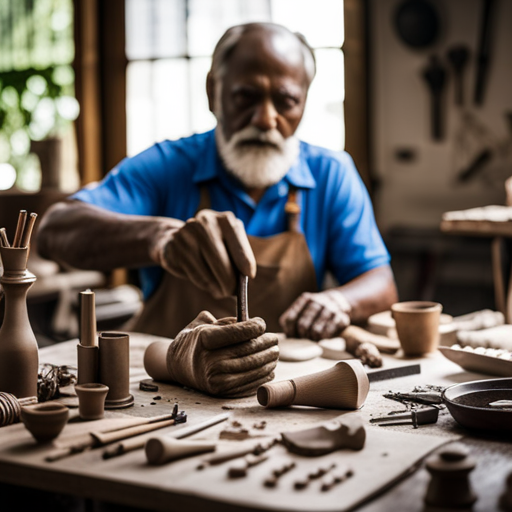Crafting Multi-layered Costumes: Techniques and Tips

Embark on a journey of artistic expression and creativity as we delve into the intricate world of crafting multi-layered costumes.
Uncover the secrets of layering techniques, texture selection, and material incorporation to bring depth and visual intrigue to your ensembles.
From balancing proportions to enhancing with embellishments, this article provides practical insights and tips for maintaining the allure of multi-layered costumes.
Let your imagination soar as you master the art of crafting captivating and dynamic costumes.
Understanding Layering Techniques
Crafting multi-layered costumes requires a strategic understanding of how to effectively layer different materials and garments to achieve the desired aesthetic and functionality. Layering methods are crucial in creating visually appealing and functional costumes. One effective technique is to start with a base layer made of moisture-wicking fabric to keep the wearer dry and comfortable. Over this, a middle layer of insulating material such as fleece or wool can be added to provide warmth. Finally, an outer layer of weather-resistant fabric like Gore-Tex or nylon helps protect against wind and rain.
Fabric combinations play a key role in achieving the desired look and functionality. For example, combining lightweight chiffon with heavier brocade can create a visually interesting and textured effect while still allowing for ease of movement. Similarly, pairing stretchy spandex with structured leather can provide both flexibility and support in the costume. Understanding how different fabrics interact with each other is essential to crafting multi-layered costumes that are both visually striking and practical.
Transitioning into the subsequent section about ‘choosing complementary textures’, it’s important to consider how fabric combinations and layering methods can impact the overall texture and visual appeal of the costume.
Choosing Complementary Textures
When crafting multi-layered costumes, choosing complementary textures is essential for creating visual interest and depth. By pairing textures that work harmoniously together, you can elevate the overall look of your costume and make each layer stand out.
Consider using contrasting textures to add dimension and intrigue to your costume design.
Texture Pairing Tips
When selecting complementary textures for multi-layered costumes, it is essential to consider the interplay of different materials to achieve a cohesive and visually appealing ensemble. Color coordination and fabric selection are crucial factors in creating harmonious texture pairings. Pairing textures that contrast in weight and drape can add depth and visual interest to a costume. For example, combining a smooth, lightweight fabric with a heavier, textured fabric can create a balanced and dynamic look. Additionally, mixing matte and shiny textures can enhance the overall visual impact of the costume. It’s important to pay attention to the tactile quality of the fabrics as well, as incorporating both smooth and textured surfaces can engage the sense of touch and further enrich the costume design.
| Texture Pairing Tips | Examples |
|---|---|
| Weight and Drape | Chiffon with Brocade |
| Matte and Shiny | Velvet with Satin |
| Smooth and Textured | Silk with Lace |
Enhancing Visual Interest
To enhance visual interest in multi-layered costumes, the careful selection of complementary textures is essential for achieving a cohesive and captivating ensemble. When choosing complementary textures for your costume, consider the following:
-
Color Blending: Incorporate a variety of textures in similar or complementary colors to create depth and visual interest. For example, pairing a smooth satin fabric with a textured lace in the same color family can add dimension to the costume. Experiment with different shades and tones of the same color to create a visually appealing blend that enhances the overall look of the costume.
-
Fabric Manipulation: Utilize fabric manipulation techniques such as ruching, pleating, or gathering to add dimension and texture to the costume. These techniques can create visually striking effects and elevate the overall design of the costume.
Incorporating Varied Materials
In multi-layered costume crafting, the incorporation of varied materials is essential for achieving depth and texture. Fabric manipulation and creative combinations allow for the creation of visually interesting and intricate costumes. Mixing different materials such as silk, lace, leather, and velvet can add richness and dimension to the costume design. Additionally, incorporating unconventional elements like feathers, beads, or metal accents can elevate the overall look and feel of the costume.
| Materials | Techniques | Effects |
|---|---|---|
| Silk | Fabric manipulation | Luxurious texture |
| Leather | Mixed media | Edgy and bold |
| Feathers | Unconventional elements | Dramatic flair |
By combining these varied materials, costume designers can achieve a multi-layered look that is visually captivating and unique. Each material brings its own distinct qualities, allowing for the creation of costumes that are rich in both visual and tactile appeal. This approach not only adds depth to the costume but also enhances the overall storytelling and character development.
Transitioning into the subsequent section about creating visual depth, the combination of these varied materials lays the foundation for building visually stunning multi-layered costumes.
Creating Visual Depth
Utilizing varied materials and techniques is essential for creating visual depth in multi-layered costume designs. To achieve this, consider the following techniques:
-
Color Coordination
-
Layering different shades of the same color can create a sense of depth and richness in the costume.
-
Experiment with complementary color schemes to make different layers stand out and create a visually interesting ensemble.
-
Fabric Manipulation
-
Use techniques like ruching, ruffling, or pleating to add texture and dimension to the layers of the costume.
-
Mixing different fabric weights and textures can also contribute to the overall visual depth of the costume.
By mastering these techniques, you can create an illusion of depth and dimension within the costume, making it visually captivating and dynamic. These elements play a crucial role in ensuring that multi-layered costume designs are visually compelling and aesthetically pleasing.
Transitioning into the subsequent section about ‘balancing proportions and silhouettes’, it’s important to understand how to harmonize the various layers and elements to achieve a cohesive and balanced overall look.
Balancing Proportions and Silhouettes
Mastering the art of balancing proportions and silhouettes in multi-layered costume designs requires meticulous attention to detail and consistent practice. Proportion balancing is crucial in creating visually appealing costumes. When layering garments, it’s essential to consider the ratio of each layer to the overall ensemble. For instance, if the outer layer is voluminous, the layers underneath should be more fitted to maintain a balanced proportion.
Similarly, when incorporating accessories, such as belts or sashes, they should be strategically placed to create a harmonious silhouette. Silhouette tips involve understanding how different fabrics drape and interact with one another. When combining multiple fabrics, consider their weight and flow to ensure that the overall silhouette is flattering and cohesive. Experiment with different combinations to see how they affect the overall look.
Enhancing With Embellishments
The addition of embellishments can elevate the visual impact of multi-layered costumes, adding depth and intricacy to the overall design. When enhancing costumes with embellishments, consider the following:
-
Adding Dimension: Incorporating embellishments such as ruffles, lace, or pleats can create a sense of depth and movement within the costume, enhancing its overall visual appeal.
-
Using Textured Fabrics: Utilize fabrics with varying textures to add dimension to the costume. Textured fabrics like brocade, jacquard, or velvet can create visual interest and depth.
-
Embroidery and Beading: Intricate embroidery and beading techniques can add a three-dimensional aspect to the costume, bringing a sense of luxury and opulence to the design.
Detailed embellishments play a crucial role in enhancing the overall look and feel of multi-layered costumes. By strategically incorporating embellishments that add dimension and intricate details, costume designers can create visually stunning and captivating ensembles that truly stand out.
Tips for Multi-layered Costume Maintenance
Incorporating proper maintenance techniques into the costume’s design and care routine is essential for preserving the integrity and longevity of the multi-layered ensemble. Maintaining multi-layered costumes poses unique challenges due to the intricacies of layering different fabrics, textures, and embellishments. To ensure the costume remains in top condition, attention must be given to proper storage and handling. Here are some practical tips for maintaining multi-layered costumes:
| Maintenance Tips | Description |
|---|---|
| Proper Costume Storage | Store costumes in a cool, dry place away from direct sunlight to prevent fabric discoloration and damage. |
| Handling Layering Challenges | Be mindful of the weight and bulk of the layers when handling the costume to avoid stretching or tearing. |
| Regular Inspection | Periodically inspect each layer for any signs of wear, tear, or loose embellishments that may need repair. |
| Professional Cleaning | Seek professional dry cleaning services for intricate costumes to ensure proper care and maintenance. |
Frequently Asked Questions
How Do You Ensure That the Multiple Layers of a Costume Don’t Become Too Heavy or Cumbersome for the Wearer?
To ensure multiple costume layers do not become heavy or cumbersome, prioritize weight distribution for comfort and mobility. Choose lightweight, breathable materials and consider the costume’s design to allow for ease of movement and ventilation.
Are There Any Special Considerations for Incorporating Technology or Special Effects Into Multi-Layered Costumes?
When incorporating technology or special effects into multi-layered costumes, it’s essential to ensure seamless integration. Careful planning and consideration for weight distribution, power sources, and visibility are crucial. Utilize lightweight materials and strategically place electronic components to enhance the costume’s visual impact.
What Are Some Creative Ways to Incorporate Hidden Pockets or Storage Into Multi-Layered Costumes?
Innovative designs and practical construction techniques can be employed to incorporate hidden pockets or storage into multi-layered costumes. Options include using reversible layers, concealed zippers, and strategically placed fabric panels for seamless integration.
How Can You Maintain the Integrity of the Different Layers of a Costume While Still Allowing for Movement and Flexibility?
To maintain the integrity of costume layers while allowing movement and flexibility, it is essential to use lightweight and stretchable materials, strategically place seams, and consider adjustable closures. Incorporating these elements ensures both functionality and aesthetic appeal.
Are There Any Specific Techniques for Creating Multi-Layered Costumes for Different Body Types and Sizes?
When creating multi-layered costumes for different body types, it’s crucial to employ costume layering techniques that ensure flexibility, weight management, and hidden storage. Integrating technology can enhance the costume’s functionality while maintaining movement.
Conclusion
In mastering the art of crafting multi-layered costumes, one must skillfully navigate the complexities of layering techniques, textures, materials, visual depth, proportions, and embellishments.
This intricate process requires careful balance and thoughtful attention to detail.
By incorporating these techniques and tips, one can create stunning, visually dynamic costumes that captivate and impress.
The result is a multi-layered masterpiece that transcends the ordinary and leaves a lasting impression on all who behold it.

Rufus Whitver is a passionate costume artisan and the creative mind behind layuo.com. With a keen eye for detail and a flair for imaginative design, Rufus brings characters to life through the art of costume making. His expertise encompasses a wide range of styles, from historical recreations to fantastical creations. Through layuo.com, Rufus shares insights, tutorials, and a portfolio showcasing his exceptional craftsmanship, inspiring fellow enthusiasts to embark on their own journey into the world of stunning costumes.





